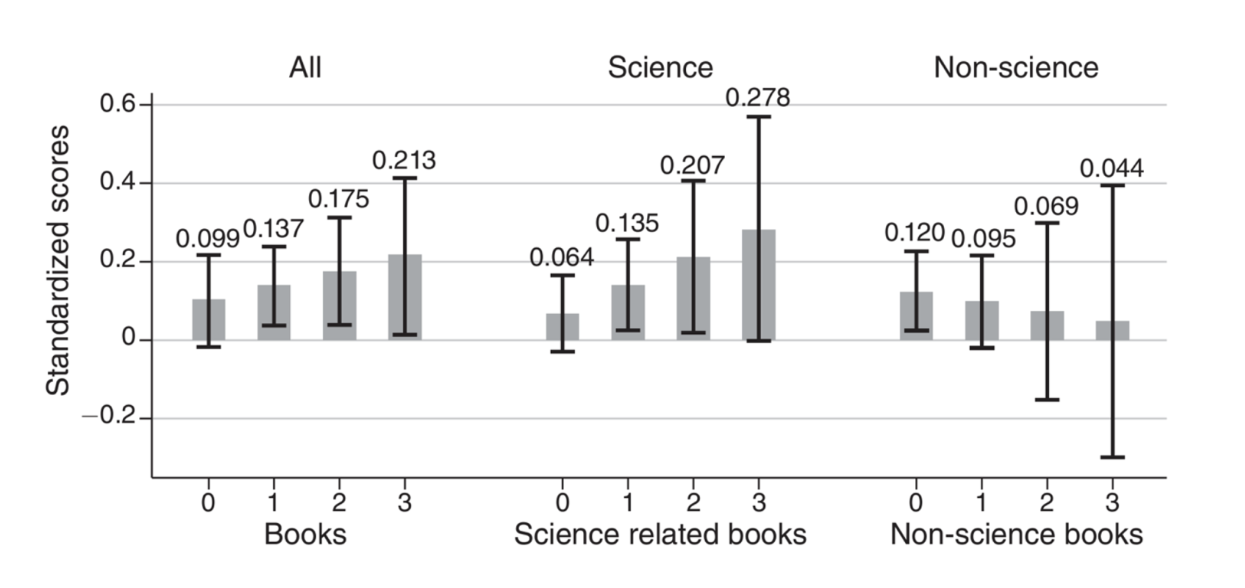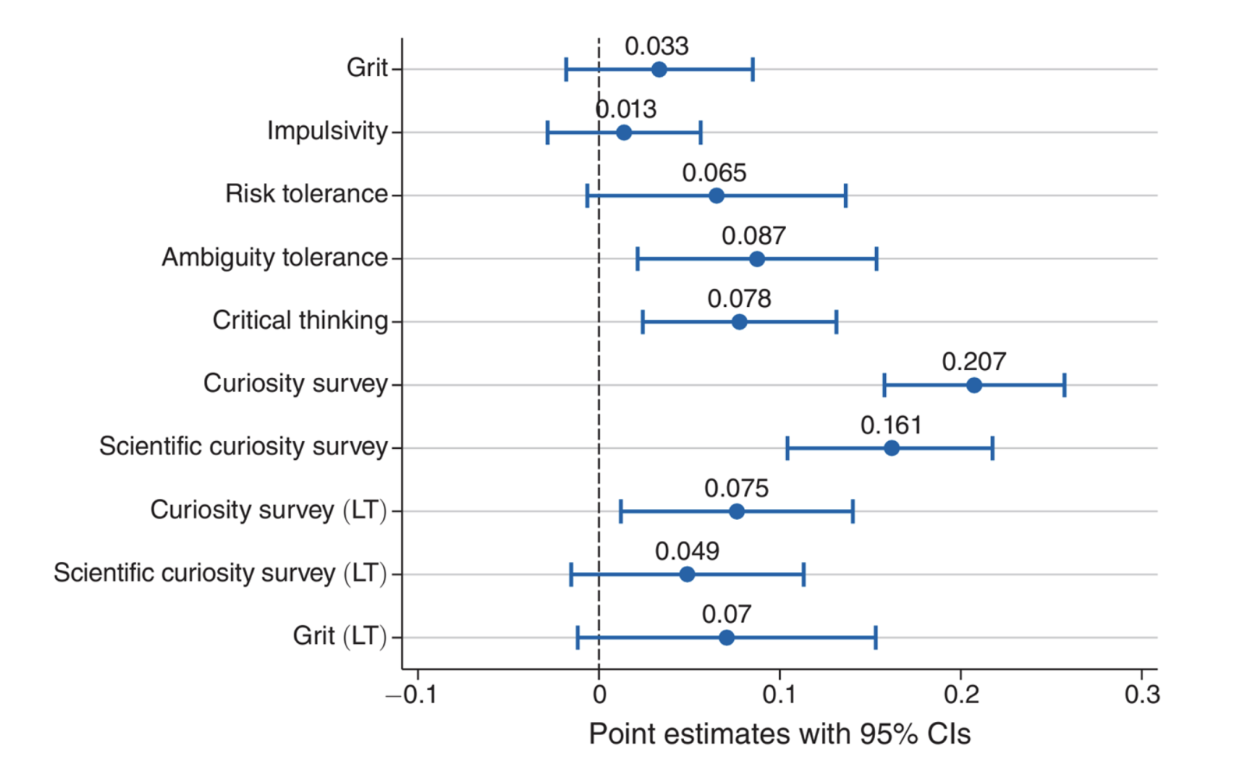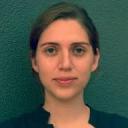
A pedagogical programme in Türkiye that nurtured children’s natural curiosity increased science test scores, and had a notable impact on maths and verbal scores
Millions of children in developing countries leave school without the foundational skills they need to achieve their potential. Insufficient infrastructure and inadequate school inputs, such as poorly designed curricula and insufficient teaching materials, are among the many basic factors contributing to learning poverty. Only recently has pedagogy been highlighted as an important factor for high-quality learning and a potentially effective tool to combat learning poverty.
While there is no consensus on what constitutes good pedagogy, teaching practices that respond to the specific needs of students and leverage their love of learning are likely to be effective (Banerjee et al. 2007, Banerjee et al. 2016, Banerji and Chavan 2016). Unfortunately, most traditional teaching practices compel students to be passive listeners and prevent the development of an active and inquisitive mind (Blanchard et al. 2009, Granger et al. 2012, Terrenghi et al. 2019, Ashraf et al. 2021).
My Curious Classroom: A pedagogical programme for primary schools
Based on recent insights into the neural mechanisms of learning, we helped develop a pedagogical programme to be implemented in elementary schools in Türkiye (Alan and Mumcu 2024). The programme teaches teachers how learning is enhanced when the urge to acquire knowledge is stimulated. This knowledge is supplemented with strategies to deepen learning in their classrooms. Treated teachers first learn the neural mechanisms of learning and how long-term memories are formed. Then, they study a pedagogical toolkit with various visual and reading materials. The toolkit contains innovative ideas for creating teachable moments and holding students’ undivided attention before the teachers introduce new and complex curricular concepts, to achieve memory consolidation. While relevant for teaching any curricular topic, in its current form, the pedagogy is more appropriate for science teaching as the toolkit primarily targets scientific curiosity. Teachers who underwent the programme practiced the prescribed pedagogy throughout an academic year. Figure 1 presents examples of ‘teachable moments’ created in classrooms.
Figure 1 Implementation of the programme: Creating teachable moments

Curiosity in primary school children: A novel task-based measure
Curiosity is a fundamental component of human cognition and is considered a critical driver of learning. Recent studies in neuroscience (Gruber et al. 2014) show via functional magnetic resonance imaging that the brain’s reward system is evoked when people are curious about a phenomenon. This facilitates more enjoyable learning and knowledge retention through memory consolidation (Berlyne 1954, Loewenstein 1994).
We designed an innovative task-based instrument that draws upon the theoretical framework developed by Loewenstein (1994) and insights from neuroscientific research on curiosity. The core idea of our tool is to elicit children’s willingness to pay for topic-specific booklets, which contain rare information. Following the elicitation of willingness to pay and the distribution of booklets, we revisit all classrooms one week later, unannounced, to measure booklet-specific knowledge. Our design allows us to estimate the treatment effect on knowledge retention and explore treatment effects on information sharing and peer learning within the classroom.
Evaluation design and study timeline
We test the effectiveness of this pedagogical programme via two independent randomised controlled trials in two large southern provinces of Türkiye. The first trial, implemented in the 2018–2019 academic year in the province of Mersin, included 50 primary schools. The second trial took place in the 2021–2022 academic year in the neighbouring province, Adana, recruiting 84 primary schools. The combined sample includes 134 primary schools with about 11,000 3rd and 4th grade students and 425 teachers.
After collecting detailed baseline data from children and teachers in the autumn 2018 (trial 1) and autumn 2021 (trial 2), we randomly assigned 78 schools to treatment (25 in trial 1, 43 in trial 2). Teachers from the selected schools received training in the prescribed pedagogy. They were given the entire academic year to practice the pedagogy in the everyday teaching of the curricular topics, with a greater emphasis on science lessons. We collected our endline data in May 2019 (trial 1) and May 2022 (trial 2) to test the effectiveness of the pedagogy using objective test scores, educational aspirations, and the novel incentivised measure of curiosity described above. When we implemented the second trial in the autumn of 2021, we also collected longer-term data from subjects of the first trial (about three years after the programme implementation in 2018).
Results
We find that the programme significantly improves children’s objective test scores in science, with no notable impact on maths and verbal scores. The estimated effect size on science test scores is about 0.073 standard deviations in the short term. The positive effect on science test scores persists into middle school years, even after a long school closure due to the COVID-19 pandemic. Treated students score 0.073 standard deviations higher than untreated students in a science test covering the middle school curriculum.
Figure 2 illustrates the programme’s enduring impact on curiosity, measured as willingness to pay for a booklet, and knowledge retention, measured as booklet test scores. By normalising the control group to zero, the programme increased the willingness to pay for a booklet by 0.109 and for a science-related booklet by 0.098 standard deviations. The effects on knowledge retention after 1-week are 0.114 for all topics and 0.102 for science-related topics. The programme’s impact on knowledge retention remains significant after 3 years, at 0.137 and 0.156 standard deviations.
Figure 2 Treatment effect on willingness to pay and knowledge retention

We also show that the programme makes friendship networks more effective learning tools. Treated students who did not receive a booklet and whose preferred booklet was received by someone else in their friendship network scored 0.170 standard deviations higher on the booklet test than untreated students in the same condition. Figure 3 shows that treated students show higher knowledge retention than untreated students as the information availability increases within friendship networks. These results are critical for education policy as they strongly suggest peer learning is more efficient in treated classrooms, where students are curious. This result is consistent with the recent evidence that human curiosity is sensitive to the social environment and stimulated by the curiosity of others (Dubey et al. 2021).
Figure 3 Information availability and treatment effect on knowledge retention

The results suggest that the programme’s success likely stems from its ability to stimulate children’s curiosity. We rule out improved teacher ability as a possible mechanism to explain our results. Figure 4 shows that while enhanced curiosity appears as a channel for improved learning, the programme enhanced multiple attributes, such as tolerance for uncertainty and critical thinking ability.
Figure 4 Treatment effects on students’ beliefs and attitudes

Conclusion
We test the effectiveness of a pedagogical programme that aims to improve learning by nurturing children’s natural curiosity. We find that the programme increased science test scores, with the effects persisting after three years. We show that this improvement is likely due to treated children’s stimulated curiosity, as measured by their willingness to pay for information and their ability to retain knowledge. The programme also makes information dissemination more effective in the classroom, highlighting the social aspect of human curiosity.
Editor's note: This article originally appeared on VoxEU.
References
Alan, S, and I Mumcu (2024), “Nurturing childhood curiosity to enhance learning: A randomized pedagogical intervention”, American Economic Review 114(4).
Ashraf, N, A Banerjee, and V Nourani (2021), “Learning to teach by learning to learn”, unpublished.
Banerjee, A, R Banerji, J Berry, E Duflo, H Kannan, S Mukherji, M Shotland, and M Walton (2016), “Mainstreaming an effective intervention: Evidence from randomized evaluations of ‘Teaching at the Right Level’ in India”, NBER Working Paper 22746.
Banerjee, A V, S Cole, E Duflo, and L Linden (2007), “Remedying education: Evidence from two randomized experiments in India”, Quarterly Journal of Economics 122(3): 1235–64.
Banerji, R, and M Chavan (2016), “Improving literacy and math instruction at scale in India’s primary schools: The case of Pratham’s Read India Programme”, Journal of Educational Change 17(4): 453–75.
Berlyne, D E (1954), “A theory of human curiosity”, British Journal of Psychology General Section 45(3): 180–91.
Blanchard, M R, S A Southerland, and E M Granger (2009), “No silver bullet for inquiry: Making sense of teacher change following an inquiry-based research experience for teachers”, Science Education 93(2): 322–60.
Dubey, R, H Mehta, and T Lombrozo (2021), “Curiosity is contagious: A social influence intervention to induce curiosity”, Cognitive Science 45(2): 1–16.
Granger, E M, T H Bevis, Y Saka, S A Southerland, V Sampson, and R L Tate (2012), “The efficacy of student-centered instruction in supporting science learning”, Science 338(6103): 105–8.
Gruber, M J, B D Gelman, and C Ranganath (2014), “States of curiosity modulate hippocampus-dependent learning via the dopaminergic circuit”, Neuron 84(2): 486–96.
Loewenstein, G (1994), “The psychology of curiosity: A review and reinterpretation”, Psychological Bulletin 116(1): 75–98.
Terrenghi, I, B Diana, V Zurloni, P C Rivoltella, M Elia, M Castañer, O Camerino, and M T Anguera. (2019), “Episode of situated learning to enhance student engagement and promote deep learning: Preliminary Results in a High School Classroom”, Frontiers in Psychology 10.


